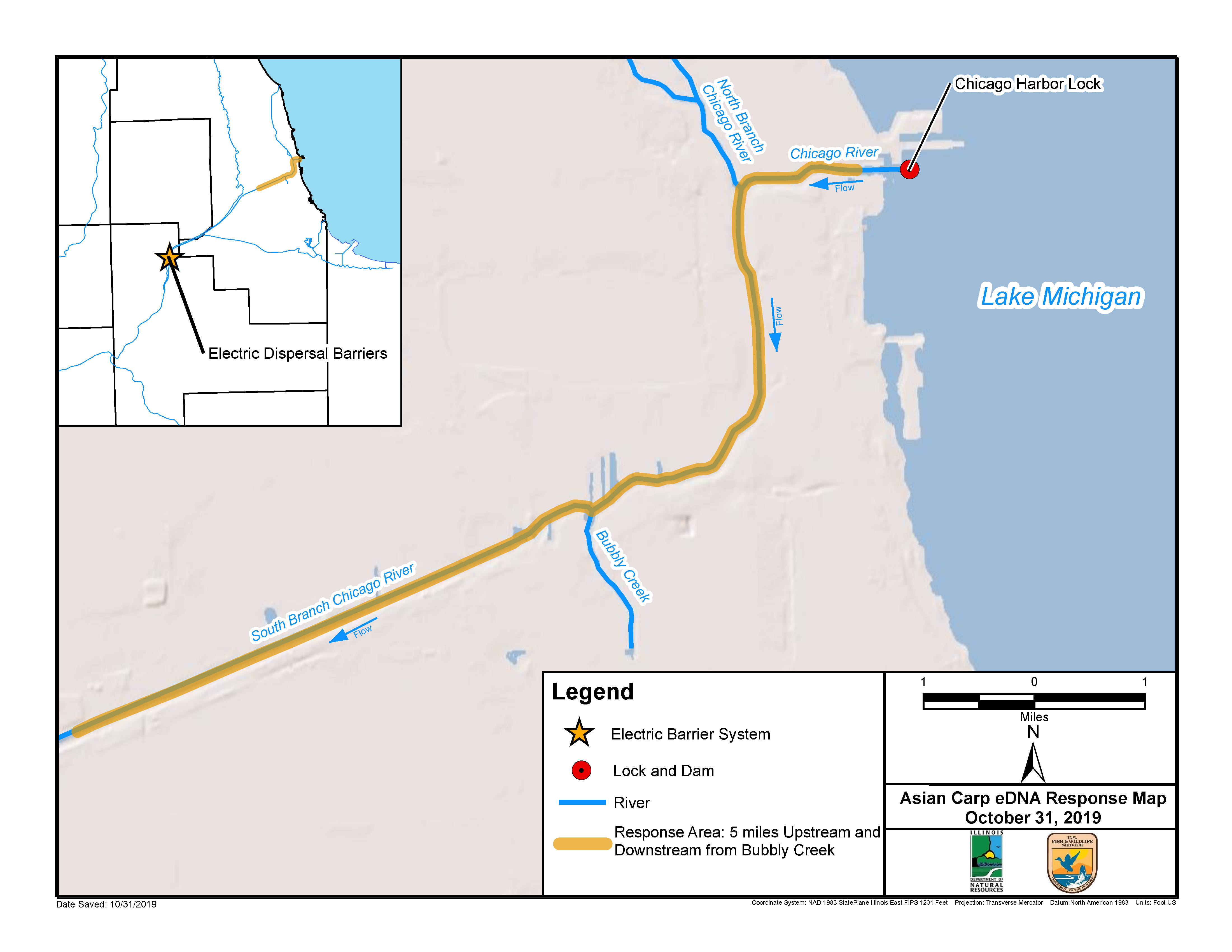Asian carp sampling and assessment effort planned for November 4-15 in Chicago Area Waterway System
November 1, 2019
Contacts:
Katie Steiger-Meister
U.S. Fish and Wildlife Service
612-713-5317
katie_steiger-meister@fws.gov

Map depicting response area for two-week intensive sampling effort.
Chicago – The Illinois Department of Natural Resources (IDNR) and partner agencies under the leadership of the Asian Carp Regional Coordinating Committee (ACRCC) will conduct a two-week intensive sampling effort in the South Fork of the South Branch of the Chicago River (Bubbly Creek) following the recent detection of Asian carp environmental DNA (eDNA) in that area.
On Oct. 30, 2019, the U.S. Fish and Wildlife Service Whitney Genetics Lab presented IDNR with results of their fall eDNA sampling, held Oct. 8-10, 2019, of the Chicago Area Waterway System (CAWS) above the electric fish dispersal barrier. These efforts are part of the ACRCC’s annual Asian Carp Action Plan to utilize all appropriate tools to prevent Asian carp, primarily bighead and silver carp, from arriving and establishing in the Great Lakes. Sampling efforts in the CAWS are heightened both in the spring and fall.
A total of 414 water samples were collected during this fall’s sampling event, of which 49 were found to be positive for silver carp eDNA and 27 were found to be positive for bighead carp eDNA. These numbers are much higher than values seen previously in this area, and the proximity and abundance of these positive detections prompted the decision to gather more information through targeted intensive sampling and assessments during the next two weeks.
The Bubbly Creek eDNA detections followed a thorough and extensive multi-agency assessment of the CAWS looking for bighead carp and silver carp that was conducted Sept. 9-20, 2019. No bighead carp or silver carp were found during that assessment.
“This sampling and assessment effort, done out of an abundance of caution, will be similar to that which would be used if a live Asian carp had been captured as outlined in the ACRCC’s Contingency Response Plan,” said Kevin Irons, manager of the IDNR Aquatic Nuisance Species Program. “It’s important to note that eDNA doesn’t mean bighead or silver carp are in Bubbly Creek, or that a reproducing population exists above the electrical barriers.”
In fact, in 10 years of intensive fish monitoring in the CAWS, only one bighead carp and one silver carp have been captured in the waters above the electric dispersal barriers.
“The risk of Asian carp arriving to Lake Michigan remains low, with evidence that the density of them at the leading edge of the population in the Dresden Island Pool — 47 miles from Lake Michigan — has been decreased since 2012 by 96 percent,” Irons said. “Increased monitoring around the electric dispersal barrier near Romeoville in 2019 has not indicated any Asian carp in the area.”
IDNR and ACRCC representatives will provide updates on the response efforts upon the conclusion of the sampling and assessment efforts during the next two weeks via www.asiancarp.us.
View recent eDNA results from the Chicago Area Waterway System.
